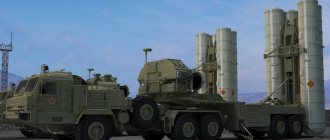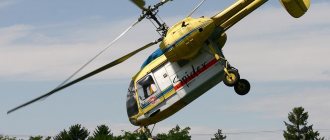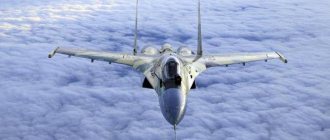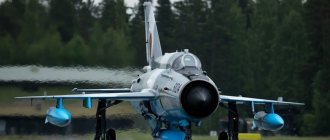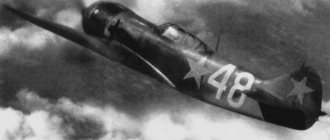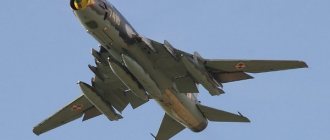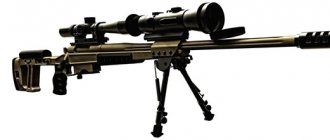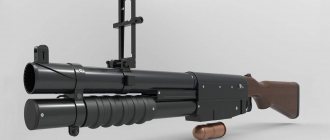At the beginning of 2015, the famous American analytical publication The National Interest published a material entitled 5 Russian Weapons of War America Should Fear (“Five Types of Russian Weapons that Americans Should Fear”). This list included the T-90 MBT, the Onyx anti-ship missile, Lada project submarines and 53-65 homing torpedoes. According to the author of the article, American pilots should be most wary of meeting the newest Russian Su-35 fighter, which has been called an “extremely formidable adversary” for any American combat aircraft.
And this is really true. Today the Su-35 is one of the most powerful combat vehicles in the world. In terms of its capabilities and performance characteristics (flight characteristics), it comes close to fifth-generation fighters. Foreign experts especially note the significant combat load of the new Russian aircraft, its lightning speed and super maneuverability. Aerobatics on the Su-35 invariably creates a real sensation at air shows. But let's talk about everything in order.
The Su-35 is a heavy multi-role super-maneuverable fighter equipped with thrust vectoring (TCV) engines. The main task of this combat vehicle is to gain air superiority, but at the same time it can also “work” against ground targets. The Su-35 aircraft was developed by designers from the Design Bureau named after. Sukhoi, and, in fact, it is a deep modernization of the honored Soviet fighter Su-27, which belongs to the fourth generation. The serial vehicle, which is currently supplied to the Russian Aerospace Forces, is designated Su-35S. It is usually classified as the 4++ generation, although this gradation is somewhat arbitrary and, rather, is a marketing ploy by the developers. The two pluses in the designation simply show how close the Su-35 is to a full-fledged fifth-generation fighter.
The Russian Su-35 fighter meets most of the requirements for 5th generation aircraft. The aircraft is equipped with an integrated avionics system, which includes a weapons control system, communications equipment and navigation and sighting equipment. The Su-35 has a phased array radar and new engines that allow it to reach supersonic speed without turning on afterburner.
The Su-35 took off on its first flight on February 19, 2008, and mass production of the vehicle began in the same year. As of April of this year, 64 Su-35 fighters have been manufactured.
Before moving on to the description of this magnificent machine, a few words should be said about the stages of its creation, because it is truly interesting. Few people know that in the recent history of Russian aircraft manufacturing there were two fighters under the designation “Su-35”. We can say that it was possible to establish mass production of this wonderful combat vehicle only on the second attempt.
Stories about weapons. Su-35
He's impressive.
However, like all products of the Sukhoi Design Bureau. Beautiful and dangerous. Super maneuverable and reliable. Capable of breaking the supersonic barrier without turning on the afterburner. 8 tons of ammunition is a significant argument in any dispute “who is cooler in the sky.” Electronics, coupled with the combat load, allows you to simultaneously hit up to 2 ground or 8 air targets. Accompany until 4 and 30 respectively.
Controlled thrust vector, which allows maneuvering even at minimum speeds. And how...
All this is SU-35.
It is believed that the Su-35 is a deep modernization of the Su-27. But this modernization is so deep that we can say that this is actually a new aircraft. Take the same glider. It does not have a front horizontal tail and a brake flap. Significantly strengthened and improved. Braking during landing is carried out by deflecting the rudders in different directions.
“Generation 4++” is conditional for the Su-35 and only indicates that the overall characteristics of the fighter are very close to the characteristics of the fifth generation fighter. Basically, the only thing missing is AFAR.
But there is something that allows the Su-35 to be first on the list of “Russia’s most dangerous weapons” in a hypothetical conflict with the United States. Experts point out that the danger of the Su-35 is associated with a very large load of long-range air-to-air missiles, the ability to launch missiles at supersonic speed, super maneuverability and powerful electronic warfare systems.
The Su-35 is equipped with two modern AL-41-F1S bypass engines manufactured by NPO Saturn with a maximum power of 14,000 kgf, with the help of which the Su-35 reaches a speed of 1,400 km/h at the ground and 2,500 km/h at an altitude of more than 11 thousand meters.
The variable thrust vector is what helps a fairly heavy vehicle perform in the air, to the envy of its competitors, figures such as “bells”, “Pugachev’s cobra”, or the “evading a missile attack in the horizontal plane” maneuver demonstrated to us at Aviadarts. Or "pancake".
In general, there is no such figure in world practice, but this is only because no one except our aircraft can make it yet. In the video we dare to convey the feeling when a 25-ton machine pretends to be a falling maple leaf. Well, that's how it feels...
The performance characteristics of the aircraft are publicly available, so we will focus on the most important things.
Armament.
The Su-35 can carry a lot of useful things.
This is a 30-mm GSh-30 cannon and 150 shells. Few? At the training ground we observed what a target truck turns into from a burst of 10 shells. It's through the roof, to be honest.
Yes, the picture shows a Su-30, but the gun is the same. The loading process has been slightly redesigned; as gunsmiths say, it is much more convenient than that of the Su-30.
12 weapon hardpoints. A flying hypermarket of Armageddon, because you can hang so many on them...
Air-to-air: Medium range: 6 × R-27ER, R-27T; 10 × RVV-AE. short range: 6 × R-73.
Air-to-ground: Anti-ship missiles: 6 × Kh-31 or 2 × Kh-59M.
Precision-guided ammunition: 6 × Kh-29T; 6 × KAB-500.
Unguided munitions: 6 S-25 (NAR); 6 blocks - B-8 launchers for 7-20 S-8 missiles.
And even a 500 kg laser-guided bomb (for confident destruction of the enemy on the ground).
Would you say fighter? Well, yes. Will destroy anyone, anywhere. On land, on water, in the air.
The capabilities of this aircraft can best be demonstrated by the Falcons of Russia, a very, very specific aerobatic team. Not as famous as “Russian Knights” or “Swifts”, but...
No, I won’t argue, the performances of “Swifts” and “Vityaz” are simply amazing. But “Falcons” primarily demonstrate the combat capabilities of the aircraft, showing elements of air combat at very low altitudes.
Some believe the Falcons are unique in this regard. I agree. The two-on-two combat performed by them is no less fascinating than the coordinated flights of the Swifts and the Knights.
And single aerobatics performed by Colonel Alexander Gostev, sniper pilot, research pilot, Honored Military Pilot of Russia, perfectly allows you to evaluate all the capabilities of the Su-35, which the group is currently piloting.
When you watch what Colonel Gostev does with this colossus, the surprise does not leave you for a long time. And admiration.
It’s a shame that I’m unlikely to have the opportunity to observe and compare the capabilities of the F-35, with which the Su-35 is usually compared. Yes, after spending several hours on YouTube, I was able to draw some conclusions. Apparently, we need to sit longer.
Yes, the F-35 is an interesting aircraft. Yes, he can do some things in terms of aerobatics. But... I wasn't impressed, to be honest.
However, this is a topic for another discussion. When we collect more information, we will definitely talk.
In the meantime, the Su-35 is a very impressive machine. Perhaps, indeed, our best.
Source: https://www.sukhoi.org/planes/military/su35 https://www.knaapo.ru/products/su-35
Story
In fact, the Su-35 designation is well known to military aviation enthusiasts. Aircraft under this name were repeatedly demonstrated at international air shows in the mid-90s.
The idea to develop a multi-role aircraft based on the Su-27 fighter-interceptor was born in the early 80s. At the development stage, the promising vehicle received the T-10S index; in 1982, technical specifications were prepared for it. To ensure the ability to destroy the enemy on the ground, they planned to install a new on-board radar on the aircraft and seriously change the weapons control system. The airframe of the vehicle was also redesigned: for example, a front horizontal tail unit (FHT) appeared.
The T-10S first took to the skies in 1988. However, this car never went into production. For some time, work continued by inertia, but after the collapse of the USSR, the designers had no time for new projects; they simply had to survive. OKB im. Sukhoi produced well-proven Su-27 fighters for foreign customers, modernized the machines that were in Russian combat units to the level of the Su-27SM, and was involved in the Su-30MK project, which later became a real “star of air shows.”
The idea of a multi-role fighter based on the Su-27 was only returned to in the middle of the last decade. At this time, the designers already had a clear understanding that to create a modern aircraft of this class, a serious modernization of the Su-27 was required, which would include not only the replacement of on-board equipment systems and electronics, but also significant reworking of the airframe, as well as equipping the fighter with a new powerful power plant. Only in this case could we count on the successful promotion of the new car on the international market. They decided to keep the old designation for the promising aircraft - Su-35. Although, in some sources the car is called Su-27BM (“big modernization”) or Su-35BM.
Production of the pilot batch of “thirty-fifths” began in 2006. Assembly of the first fighter was completed in mid-2007; the aircraft was even presented at the MAKS-2007 air show. The first flight of the Su-35 took place at the beginning of 2008, with Honored Test Pilot of Russia Sergei Bogdan at the controls of the vehicle. The day after the tests, the Su-35 was shown to Putin, who visited Zhukovsky especially for this purpose.
It should be noted that the plane that took off on a February morning from the Ramenskoye airfield had little in common with the T-10S, which was developed in the mid-80s. The only thing they had in common was their common “ancestor,” the Soviet Su-27 fighter. Initially, the new car was called Su-35BM, and then simply Su-35. After the Russian defense department showed interest in the fighter, the aircraft received the letter “C” in its designation, which is traditionally present in production models of military equipment for the needs of the Russian Ministry of Defense.
One of the most important differences between the “thirty-fifth” and its predecessors is the installation on it of the latest AL-41F1S engines (“product 117”), developed and manufactured by specialists. Like the Su-35 fighter, these aircraft engines have a long history.
Bench tests of “product 117” began back in 2003. Five new engines were built for them. Later, the Su-27M flying laboratory was used for flight testing.
AL-41F1S has significantly better characteristics in terms of thrust and specific fuel consumption compared to its predecessors.
In 2009, a contract was signed between the Russian Ministry of Defense and the Sukhoi Corporation for the supply of 48 Su-35S fighters with a completion date until the end of 2015. The second agreement was concluded in December 2015. It provides for the production of 50 Su-35 aircraft by 2022.
In 2010, tests of the Su-35 were successfully completed. Already in May of the following year, the first production fighter Su-35S took to the skies, and six months later the second production aircraft made its flight.
Not only the Russian military became interested in the Thirty-Fifth; the new fighter was also appreciated abroad. In 2015, a contract was signed with China for the supply of 24 Su-35s; as of the beginning of this year, 4 aircraft have already been sent to the customer. The Indonesian military also liked the Russian fighter; by 2022, 11 Su-35s are planned to be delivered to this country. The contract amount is $1.14 billion. Negotiations are currently underway with India, Malaysia and the UAE.
Production of the new fighter was launched at the aircraft plant named after. Yu. Gagarin (Komsomolsk-on-Amur).
Currently, several Su-35 units (four aircraft were reported) are part of the Russian aviation group in Syria.
The domestic air force has not received new aircraft in significant quantities for almost fifteen years. Therefore, new aircraft - including the Su-35 - are head and shoulders above the aircraft that entered service in the late 80s and early 90s. Today, the Su-35 is the most advanced fighter of the Russian military space forces and the real pride of the glorious family of Su-27 aircraft.
In conclusion, you can add the following. The Su-35 fighter is not just an excellent combat unit, but also a test platform that was fully used to create the 5th generation fighter. Despite the fact that the PAK FA as a whole bears little resemblance to the "thirty-fifth", many components, assemblies and technical solutions were tested on the latter, which were later used on the Russian fifth-generation fighter. This primarily concerns avionics, propulsion and weapons systems.
